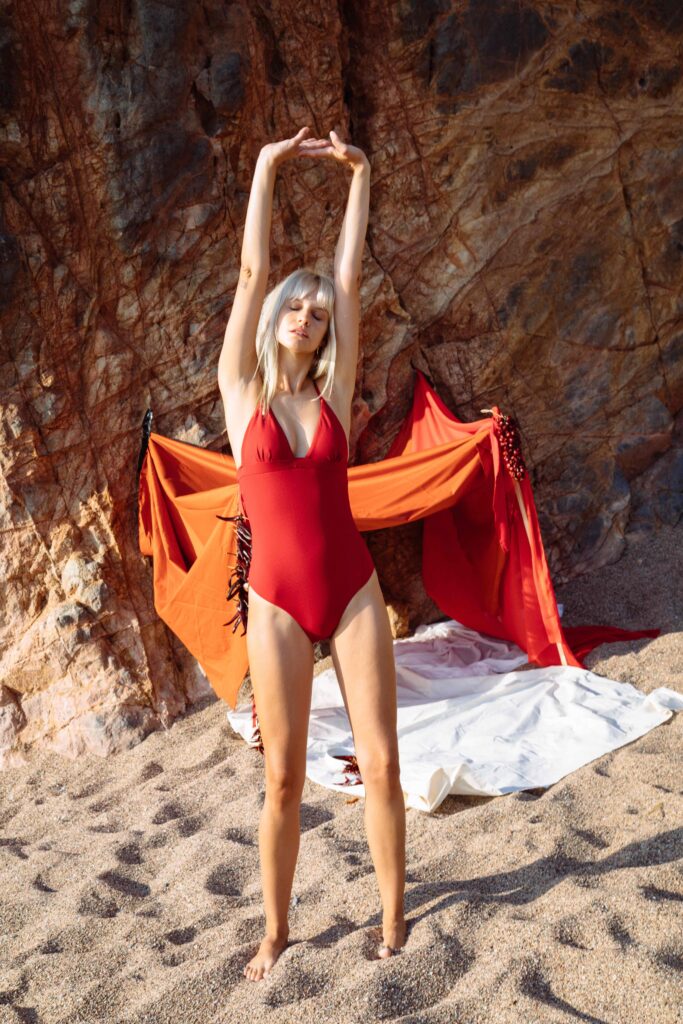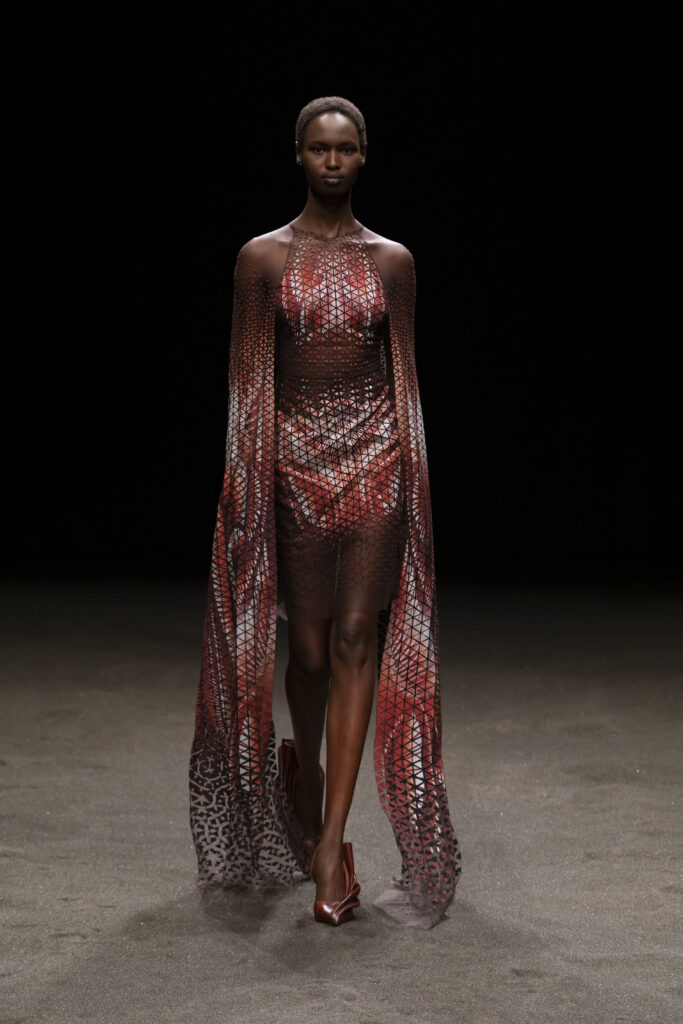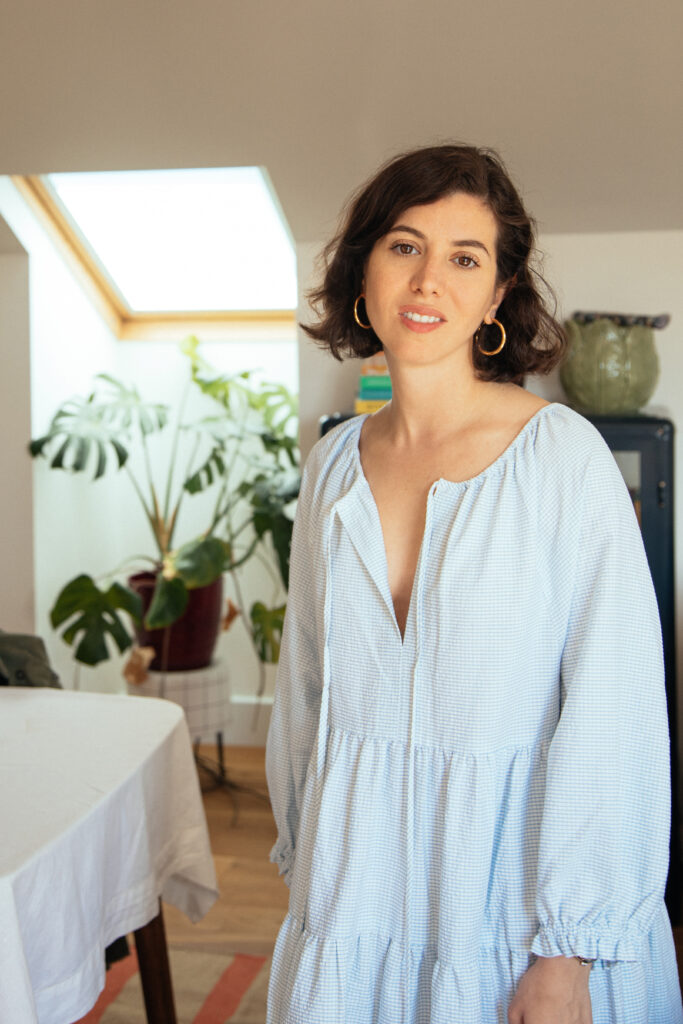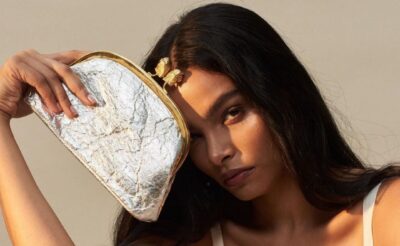As our global plastic problem reaches its tipping point, fashion is fighting back with collections that, quite literally, won’t cost the earth, proving good things come to those who don’t waste.
Did you know that every piece of plastic ever made is reported to still exist to this day? Studies estimate that if we continue to throw plastic into the oceans, there will be more of it than fish in the sea by 2050. Since toxic microplastics were discovered in our waters in the early 2000s, the debate about how to halt this pollution has precipitated a fervent consumer backlash against single-use plastic, while over the last few years, controversial documentaries examining the impact of plastic marine debris and overfishing around the world have been drilling home the fact we have a responsibility to be conscious consumers.
“A Plastic Ocean played a critical role in raising the global awareness of the negative impact of plastic on the environment, waterways and human health,” Julie Anderson, CEO of Plastic Oceans, a US-based non-profit organisation whose goal is to end plastic pollution and foster sustainable communities worldwide, tells MOJEH. “Seaspiracy also raised the awareness of the role of the fishing industry in ocean plastic pollution. Both films highlight the plastic pollution problem and emphasise the role of the consumer to make personal buying/consumption choices to reduce plastic pollution.”

Girlfriend Collective
The buzzword du jour, sustainable fashion is a term that’s increasingly overused with little to back it up, yet things have been taking a turn for the better as of late, with an increasing number of designers making collections out of plastic waste that has come specifically from the ocean. And with July 3rd marking International Plastic Bag Free day, a holiday that both aims to eliminate the use of single-use plastic bags while raising awareness of the harm they do to nature and to animals and marine life, there’s no better time to celebrate the environmentally-conscious trail blazers who are fighting back against this immortal waste.
“By giving plastic that has been fished out of the ocean a new lease of life as long-lasting products that won’t make their way back into the ocean, designers are certainly helping marine life – specifically the marine mammals, fish and birds who get strangled in it, or ingest it,” says chairman of Emirates Environmental Group Mrs. Habiba Al Mar’ashi. “While marine animals in the gulf are very resilient, they are under a number of threats including rising temperatures and rising water salinity. The absence of plastic waste can surely help them in the long run.”

Casa Raki
At the top of the chain, sportswear, loungewear and swimwear labels are increasingly giving plastic a second wind, with a growing number of brands, such as Fisch, creating cool collections using the game-changing yarn, Econyl. Transforming the likes of fishing nets and marine waste into a high-quality textile we can wear again and again, Parsons School of Design graduate and the first recipient of Unifi’s Leading the Change Award Mara Hoffman is one such example – while all her solid swimwear is made with Econyl, her textured bikinis and swimsuits are also constructed from Repreve – a polyester fibre made of 100 per cent recycled plastic.
Elsewhere, Dubai-based beachwear label Ohoy Swim, which was founded in 2016 by Henna and Anna, two Scandinavian friends on a mission to make the world a cleaner place, also makes use of nylon woven from the plastic netting that is littering the ocean to create simple styles for women of all ages. “We have always thought that the planet is under too much stress with the modern habits of fast fashion,” the designers tell MOJEH. “We decided to create OHOY during a surf trip to Bali where we were constantly baffled with the amount of plastic that was washed up everywhere. Add to this our constant search for a good one-piece that would be environmentally-friendly as well as functional and simple – it made sense to make our own with an amazing fabric that could be endlessly recycled into the circular economy.”

OHOY Swim
Flying the flag for luxe activewear that guarantees no environmental or social damage in its production, Seattle-based start-up Girlfriend Collective knows aesthetics are just the start – it makes all its fabrics using recycled, post-consumer materials including single-use water bottles and discarded fishing nets cleaned from the seas, with each pair of leggings made from 25 plastic bottles and each bra using 11. As such, the brand adds around 70,000 to its production line each month, with each pair of its popular FLOAT leggings removing 1kg of waste from the oceans.
Similarly 20 plastic bottles go into one of Ucon Acrobatics casual-cool backpacks, who built their brand on quality, innovation, creativity and fair conditions. “We strive for incomparable quality products, both beautiful and performing, inclusive and accessible, and above all as responsible as possible,” say its designers Quang and Ellie Din. “We know the world doesn’t need another activewear brand, but we believe people want brands that they can get behind, that stand for something.”
“It’s great that we are seeing more and more major fashion houses using recycled plastic in their creations, as it creates a demand for recycled plastic as consumers seek these products out,” explains Julie. “Since virgin plastic is usually cheaper than recycled plastic, producers continue to use this, and it further depletes natural resources and increases the amount of plastic produced. We need more big brand leaders to use recycled plastic to continue the trend of using recycled plastic. This in turn will continue to drive the demand by consumers.”

Prada Re-Nylon
From Prada and Gucci to Tom Ford, it’s an initiative that’s most certainly kicking in with some of the industry’s biggest Houses too, the former of which announced the launch of its Re-Nylon collection back in 2019. A range of six classic bags made from Econyl, the collection expanded to ready-to-wear during the pandemic, intermixing silhouetted sportswear with timeless luxury. Miuccia even partnered with UNESCO to ensure that a portion of the collection’s sales go to a newly developed global programme dedicated to educating people on environmental sustainability, and by the end of 2021, Prada’s sustainability focus is to convert all of their virgin nylon into regenerated nylon.
Another designer making plastic feel luxurious, Tom Ford’s 002 Ocean Plastic watch is made with 35 bottles’ worth of recycled plastic from the ocean, and while it might not be the first material that leaps to mind when you think of the American icon, it’s a clear indication that sustainability is a growing issue for designers and far from a feel-good gimmick. 40mm in diameter with an anti-reflective sapphire crystal and Swiss quartz movement, both the case and paracord braided strap are both made from recycled ocean plastic, as well as its packaging. Alongside the launch, Ford also announced the creation of a prize totalling $1million for projects that can create, by 2025, a viable and scalable replacement for the thin plastic film from which disposable plastic bags are made.

Iris van Herpen Couture SS21
Likewise, creative director Alessandro Michele launched Gucci’s first environmentally-conscious collection, Off the Grid, just last year, which came comprised of genderless sneakers, bags, accessories, and ready-to-wear, with each item thoughtfully made using recycled, organic, bio-based or sustainably sourced materials. It is just one component of the brand’s path towards a more sustainable future and an extension of Gucci’s program Circular Lines, an ongoing initiative to implement a circular production that aims to reduce waste by reintroducing byproducts back into the supply chain. “Gucci Off The Grid has been conceived to enhance respect for, and responsibility towards, the environment,” said the House at the time. “If we lighten our environmental footprint we can enjoy the world with greater freedom— the freedom to follow our dreams, with curiosity, openness and joy.”
With the quality of recycled fabrics now so high, we’re even seeing them make their way into Haute Couture, with Iris van Herpen unveiling a gown for her Roots of Rebirth spring/summer 2021 collection that came constructed from upcycled ocean plastic fabric sourced from the estimated eight million tons of waste that end up in our oceans every year, and produced by Parley for the Oceans. The resulting product was cut into trilateral pieces to form a tessellated, translucent garment. “Craftsmanship and couture has always been about innovation,” says Iris. “If we think of very traditional techniques, like early lacemaking, or even the sewing machine—at the time, they were highly innovative.”
While it’s clear that removing the waste and recycling existing plastics is only a partial solution to a global problem – reducing the amount that goes into it in the first place is paramount – there’s no denying that it can certainly help, especially if the plastic is rescued directly from the sea. And as sustainable practices become the norm, we predict even more high-fashion designers to follow suit in the years to come. After all, in the words of Tom Ford, ethical luxury is THE greatest luxury of all.
Five Minutes With…Josefina A. Theo of Casa Raki
Founder of this high fashion sustainable resortwear brand for lovers of travel, Casa Raki, Josefina A. Theo has always been an advocate of high quality swimwear that doesn’t harm the ocean…

Why did you decide to create Casa Raki?
The beach is my favourite place to be and part of my childhood. I grew up in South America, spending much of my time on the coast in Uruguay. Sun and sea and the beach have been a part of my life as long as I can remember. I always wanted to bring this to life through a brand that had respect for the natural world. Plus to me, resort and swimwear is the perfect way to explore my love for fashion and combine this with my desire to be comfortable yet elegant.
Casa Raki started like a dream when I was working as manager of the photography department for a high-profile retailer. It was here I could see clearly that there was a lack of luxury sustainable swimwear brands and after gaining all this experience on the product side, I thought it was finally time for me to create the brand.
Why do you think this recycling of plastic to create collections is so important?
My ethos is that design and sustainability go hand-in-hand. I think turning waste into resource has important implications for consumers and other industries as whole. It is not just about being resourceful, but it is about showing a more circular mindset and demonstrating to consumers that this can also be luxury. I think this mindset shift is incredibly important in the industry and will help generate better and better sustainable innovations.
We believe everyone in the industry has options and alternatives to address the issues of sustainability and waste and I wanted my brand to be part of the solution, showing there is a different way. We take pride in being a small independent boutique brand. South American inspired, designed in London and made ethically in Portugal and Bulgaria by female owned factories.
As a team we thrive on exploring and discovering new ways to improve our commitment to protecting the environment. We envision a fashion industry of the future where sustainability is the norm, but for now, we are excited and proud to partner with like-minded companies, mills, factories, and people to produce our garments as eco-consciously and ethically as possible.
We are aware recycling doesn’t solve everything and reducing the amount that goes into the ocean in the first place is paramount. However, it can certainly help – especially if the plastic is fished out of the sea to be rescued. What are your thoughts?
Sustainability is a hugely subjective topic, meaning something completely different from one person to the next. Recycling won’t solve everything, but small steps add up and the more brands explore and investigate the right options, technologies and innovations the more that can be done. Sustainability is a journey and once you start it is hard not to keep innovating and looking for better options, especially if you have seen first-hand the problems with waste and pollution.
I believe all emerging brands have a responsibility to show the next generations the way forward and give the consumers better options. Brands showing sustainability as a true luxury are helping to generate a whole new type of consumer, and once consumers only start buying from brands that prove they have the right intentions this is when big things will happen.
Read Next: Ocean Inspired Jewellery To Style Up The Sands
- Words by Naomi Chadderton





